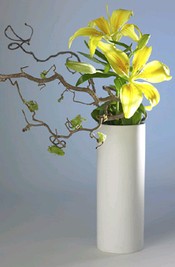by Monica Resinger
Daylilies are one of my favorite perennial plants. They are pretty, hardy and very easy to take care of. They have arching, sword shaped leaves and lily shaped flowers that come in all shades of yellow, orange, red and more. They grow to a height of about 18 inches usually and are best placed in the middle of the flower bed. Daylilies are called this because their large lily-like blooms only last one day, however, the next day there will be a new bloom right next to the old one on the same stem.
Daylilies will grow in all zones and like full sun, but if your area is very hot, plant them in semi shade. They will usually adapt to any type of soil. They need quite a bit of water during bloom and should be fed with complete fertilizer during spring and summer.
Daylilies look beautiful planted near Shasta Daisies or Poker plant. They do well on banks, near pools in the flower bed, and in containers. You can even try them in the vegetable garden planted near some salad ingredients.
The petals are edible and are very tasty. They are crisp and sweet like lettuce and go very well in tossed salads, not only for flavor and texture, but to make the salad pretty.
If you don’t have a daylily yet and are looking for easy and rewarding plants, I recommend you get one (or two, or three). Before you buy one, check to see if your family and friends have a plant that needs dividing. This way, when you look at the plant in the future, you’ll have a pleasant memory of who gave it to you.
